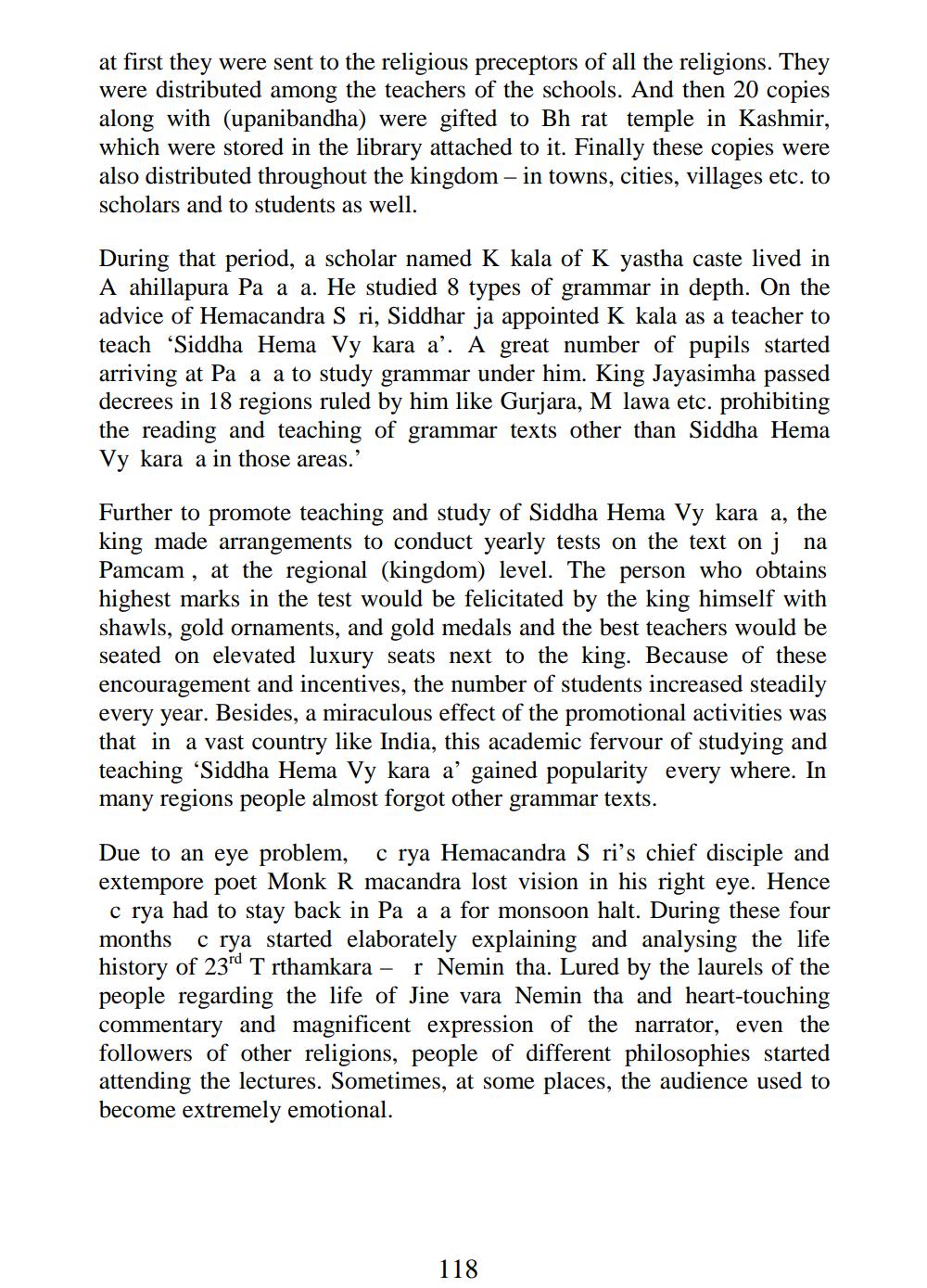________________
at first they were sent to the religious preceptors of all the religions. They were distributed among the teachers of the schools. And then 20 copies along with (upanibandha) were gifted to Bh rat temple in Kashmir, which were stored in the library attached to it. Finally these copies were also distributed throughout the kingdom - in towns, cities, villages etc. to scholars and to students as well.
During that period, a scholar named K kala of K yastha caste lived in A ahillapura Pa a a. He studied 8 types of grammar in depth. On the advice of Hemacandra S ri, Siddhar ja appointed K kala as a teacher to teach "Siddha Hema Vy kara a'. A great number of pupils started arriving at Pa a a to study grammar under him. King Jayasimha passed decrees in 18 regions ruled by him like Gurjara, M lawa etc. prohibiting the reading and teaching of grammar texts other than Siddha Hema Vy kara a in those areas.'
Further to promote teaching and study of Siddha Hema Vy kara a, the king made arrangements to conduct yearly tests on the text on j na Pamcam , at the regional (kingdom) level. The person who obtains highest marks in the test would be felicitated by the king himself with shawls, gold ornaments, and gold medals and the best teachers would be seated on elevated luxury seats next to the king. Because of these encouragement and incentives, the number of students increased steadily every year. Besides, a miraculous effect of the promotional activities was that in a vast country like India, this academic fervour of studying and teaching ‘Siddha Hema Vy kara a' gained popularity every where. In many regions people almost forgot other grammar texts.
Due to an eye problem, crya Hemacandra S ri's chief disciple and extempore poet Monk R macandra lost vision in his right eye. Hence
c rya had to stay back in Pa a a for monsoon halt. During these four months c rya started elaborately explaining and analysing the life history of 23" T rthamkara - r Nemin tha. Lured by the laurels of the people regarding the life of Jine vara Nemin tha and heart-touching commentary and magnificent expression of the narrator, even the followers of other religions, people of different philosophies started attending the lectures. Sometimes, at some places, the audience used to become extremely emotional.
118




